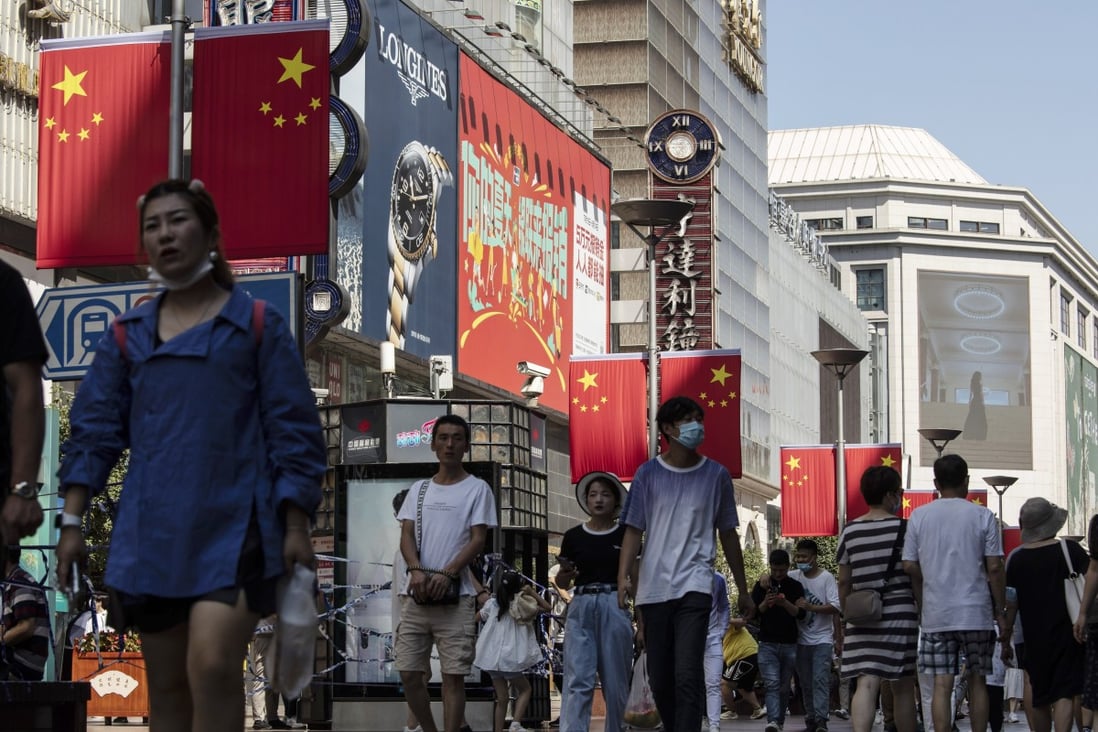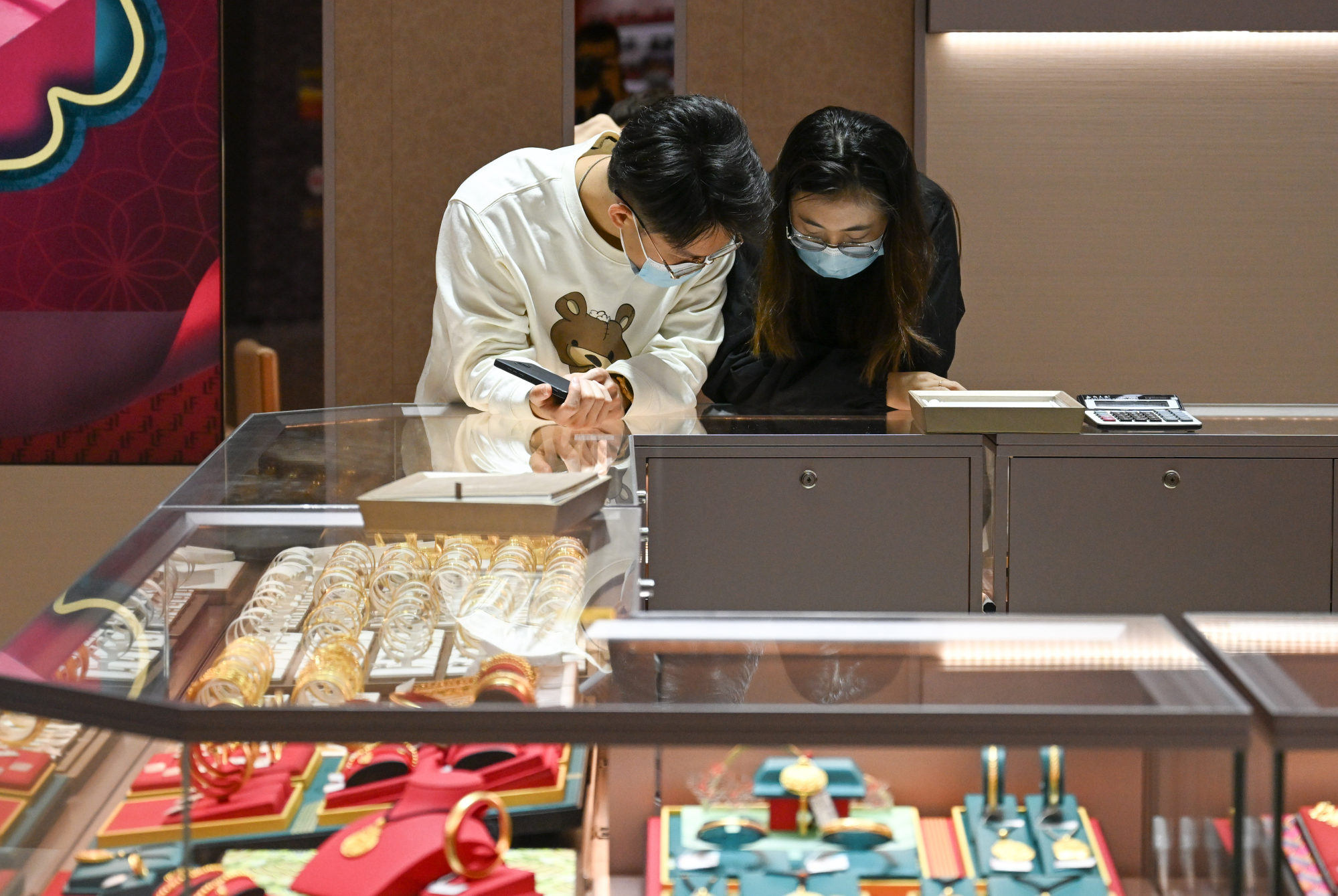He Huifeng

Unlike in the West, where soaring inflation has brewed into a political storm, China’s middle class is more concerned with the ramifications of falling wages that are curbing non-essential spending and depressing the economic outlook.
While the United States is battling its highest inflation rate in about four decades, China has seen food prices increase just over 2 per cent from a year ago.
But for the roughly 400 million members of China’s middle class, income reductions have become increasingly commonplace amid the nation’s strict zero-Covid policy and difficult economic conditions.
“From international and domestic news, we have seen that global commodity inflation is significant, and it will definitely affect China’s oil, natural gas and grain prices in the second half of the year,” said Gong Wentao, an independent investor in Shenzhen’s property market and the mainland’s stock market.
“But for ordinary people, we still believe in the ability of the Chinese government to stabilise basic prices … Such high inflation rates in the West will certainly not happen in China.
“Meanwhile, at present, China’s housing prices, rents and incomes are generally stagnant, with growing news of people being laid off. All we can do is spend less, invariably, no matter what kind of incentives are launched. This is equivalent to the eve of a depression, which is really scary.”
Nonetheless, Gong said he believes China has taken meaningful steps to control inflation, including by stockpiling grain over the past two years.
China’s consumer price index (CPI), a main gauge of inflation, rose by 2.1 per cent in April from a rise of 1.5 per cent in March and 0.9 per cent in January.
Last year, China’s CPI grew by 0.9 per cent, overall, but the latest expansion is still seemingly within a manageable range, compared with growth of 2.9 per cent in 2019 and 2.5 per cent in 2020, and is still within the “around 3 per cent” government target for this year.
China will release its May inflation data on Friday, and the consumer price index is expected to rise slightly to 2.2 per cent from 2.1 per cent in April, according to Wind, a leading provider of financial information services in China.
The nation’s producer price index, which reflects the prices that factories charge wholesalers for products, was expected to continue to ease to 6.3 per cent in May, down from 8 per cent in April, according to Wind.
In April, fresh vegetable prices rose by 24 per cent, and fresh fruit prices rose by 14.1 per cent, but the CPI increase was moderated as the price of pork fell by 33.3 per cent, year on year.
Facing imported risks from stagflation in the United States and a possible recession in Europe, China needs – more than ever – to boost domestic consumption, according to Shen Jianguang, chief economist at JD Digits, the fintech arm of e-commerce giant JD.com.
Shen also said decrease in domestic spending has already become the main economic risk in China.
Wendy Liu, an operations director at a foreign firm in Shenzhen, is still trying to wrap her head around the economic turmoil.
“I don’t know how to correctly understand the current situation – whether it is stagflation or deflation,” Liu said.
“On the one hand, vegetables, fruits, dining and consumer electronics have been increasing in price this year, but housing rent and meat and rice, which have the greatest impact on ordinary people, have seen a quite limited increase.
“Since 2020, most of my friends have stagnant or declining incomes. I can still afford to make a living, but to maintain the same quality of life in the middle class as we had last year – I feel a lot of pressure.”
According to a recent public survey about income on Weibo, China’s leading online social media platform, more than 56.1 per cent of 3,359 respondents said their incomes had shrunk during the pandemic, while 24.6 per cent said their incomes were frozen.
While pork and rent prices are expected to be largely little changed, much of China’s urban middle class has lost its so-called cherry freedom, as consumers cut discretionary spending.

Customers select products in a duty-free shop in Haikou, in China’s Hainan province. Discretionary spending is down in China, as salaries stagnate or fall, and the cost of living rises. Photo: Xinhua
The term was once a buzzword among China’s middle class, referencing one’s ability to purchase pricey products without a second thought, including imported treats such as Chilean cherries.
“Last year, I wouldn’t hesitate to buy a kilogram [2.2lbs] of domestic high-end grapes for [up to] 70 yuan (US$10.50). But now the price of the same brand is 120 yuan, and an imported kiwi costs about 12 yuan, so people are thinking twice before buying,” said Qiu Fa, a Guangzhou-based sales manager of a jewellery shop.
Meanwhile, despite the decline in consumption and investments, costly mortgage payments still must be made, and household debt is rising.
“For the past decade, everyone imagined and took for granted that life would be better – buying a home to cushion inflation and getting good returns [on investments]. But no one thinks that way any more,” said Lin Xiaoxia, a Shanghai-based white-collar worker.
According to Cric China, one of China’s main real estate data application service providers, the average monthly residential rent in 55 cities across the country was 33.02 yuan per square metre in the first quarter of 2022, down by 0.72 per cent from the last quarter of 2021. And compared with 2021 as a whole, the rent increase rate has significantly decreased.
Residential rents in Shenzhen, China’s most dynamic tech city, were also on a downward trend in 2021, falling by about 11 per cent compared with 2019, according to Centaline Property’s data.
“In May and June in previous years, a large number of young graduates from all over the country flocked to Shenzhen to seek jobs, and landlords took this opportunity to raise rents, but not this year,” said Jade Zheng, a Shenzhen landlord who will keep the price of rent on her two condos at the same level as last year.
No comments:
Post a Comment